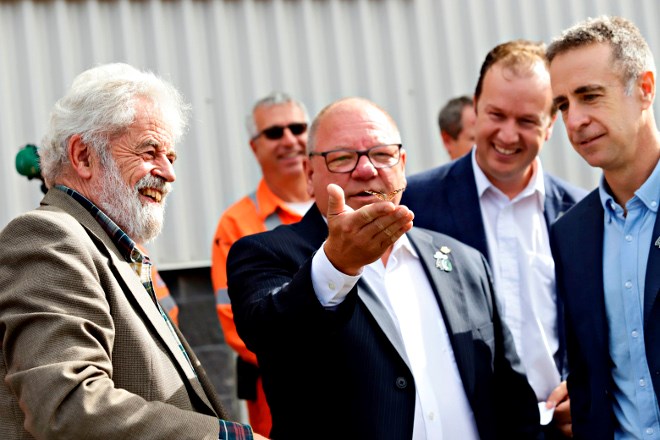Vale has puts the wraps on its $1-billion Clean AER (Atmospheric Emission Reduction) Project at the Copper Cliff Smelter Complex in Sudbury.
Beginning in 2012, the company called the project the “the largest single environmental investment in Sudbury’s history,” which will achieve an 85 per cent reduction in sulphur dioxide emissions and a 40 per cent reduction in metal particulate emissions.
It renders Sudbury’s iconic – and infamous – Superstack obsolete.
The project involved the construction of two new converters, a wet gas cleaning plant, a new secondary baghouse and fan building, and the reconstruction of the smelter converter flues.
“Emissions are so significantly reduced by the Clean AER Project that we will no longer require our iconic Superstack,” said Dave Stefanuto, Vale’s vice-president of North Atlantic Project, in a Sept. 14 news release.
“The eventual decommissioning of the Superstack is a symbol of environmental progress for our company and the mining industry as a whole.”
In its place, two 137-metre (450-foot) stacks are being constructed, requiring far less energy to operate than the Superstack and reducing greenhouse gas emissions from the smelter by 40 per cent. Following construction of the concrete shells, steel liners will be installed in the new stacks in 2019.
The Superstack’s steel liner will be removed in 2020 and it will be taken out of service and placed into care and maintenance. The removal of the concrete shell will begin and continue over several years.
“The completion of our Clean AER Project is a historic milestone that demonstrates how far we have come as a company in reducing our environmental footprint,” said Ricus Grimbeek, chief operating officer of Vale’s North Atlantic Base Metals Operations and Asian Refineries, in a statement. “It is something that all of us at Vale and our local community can be very proud of.”
During construction, the Clean AER Project generated 550 jobs, plus economic spinoffs to area service and supply companies.
"Not only is this the single largest environmental investment in our city’s history but proof of how the mining sector is working with our community to move forward in improving our environment and making operations sustainable and safer for the long-term,” said Greater Sudbury Mayor Brian Bigger.
“This doesn’t just help the future of the environment around Sudbury, it helps protect the climate of the planet,” said David Pearson, professor of earth sciences at Laurentian University.
“In a generation, Sudbury has gone from the pollution capital of Canada to one of the most innovative mining clusters in the world, pioneering the technology that is building and sustaining the next generation of mines,” said Sudbury MP Paul Lefebvre.
“The Clean AER Project is a shining example that collaborations between industry, government and pro-environment organizations are possible and are happening,” said Nickel Belt MP Marc Serré. “This program will protect the environment and continue to grow our mining industry while fostering job creation.”




